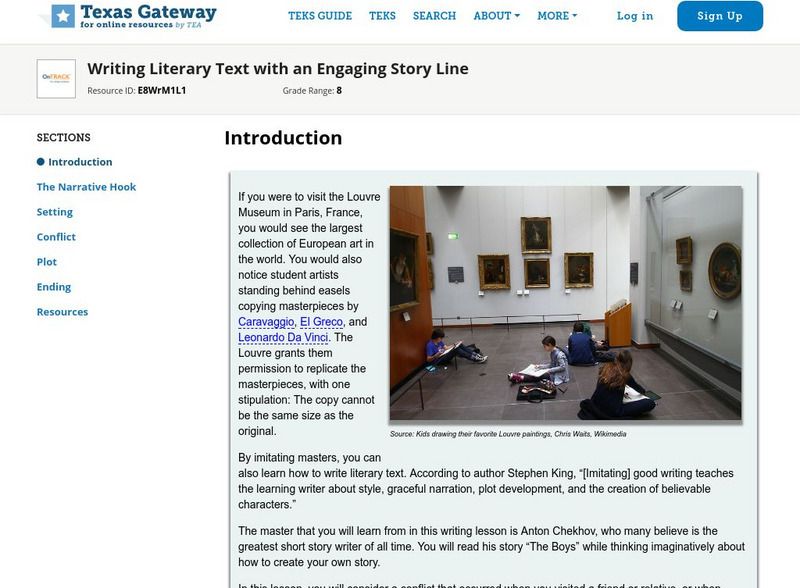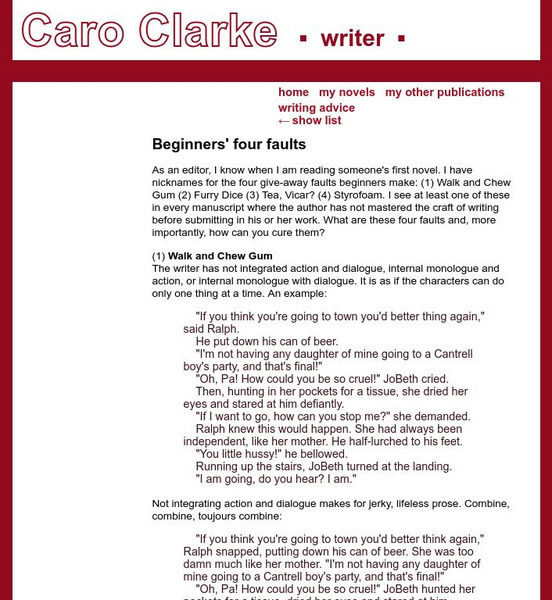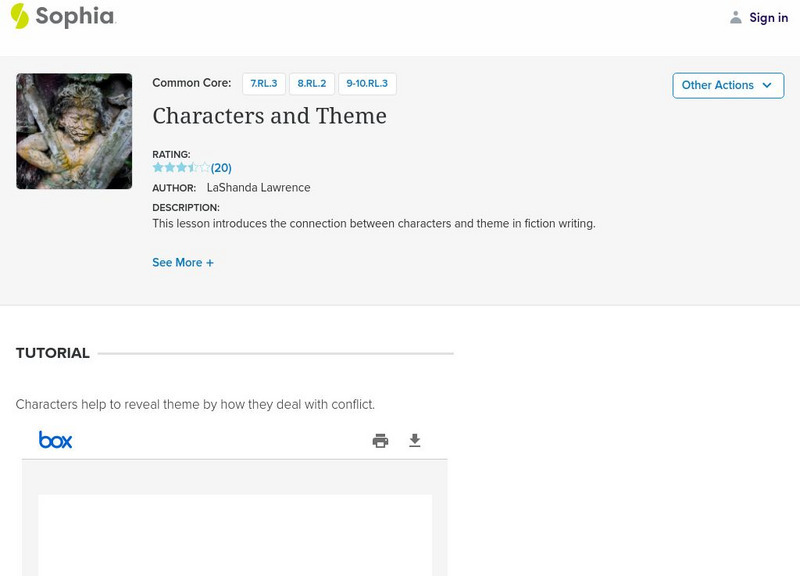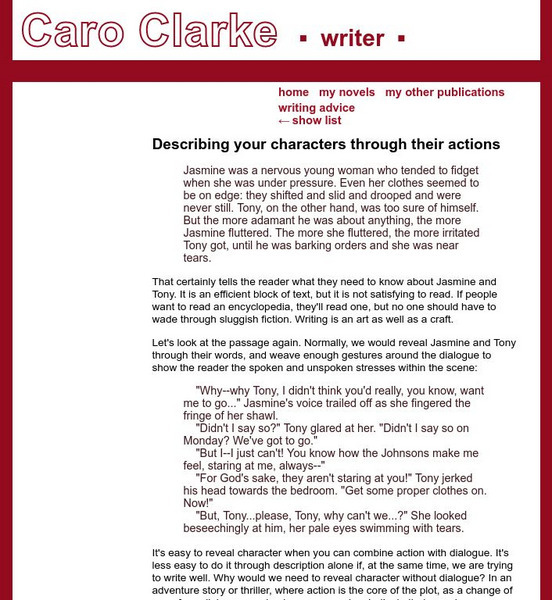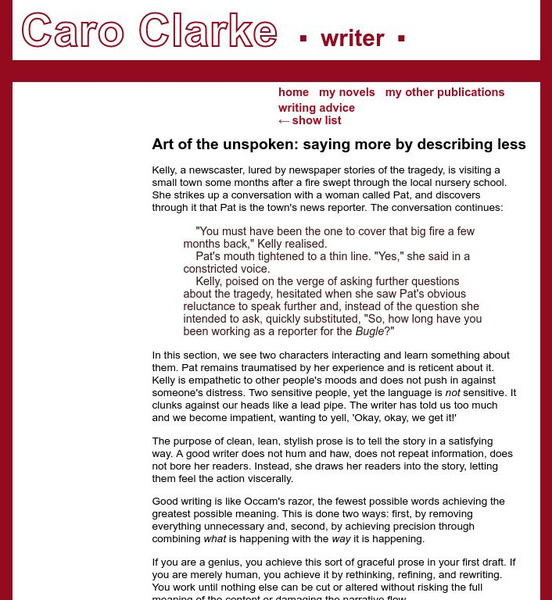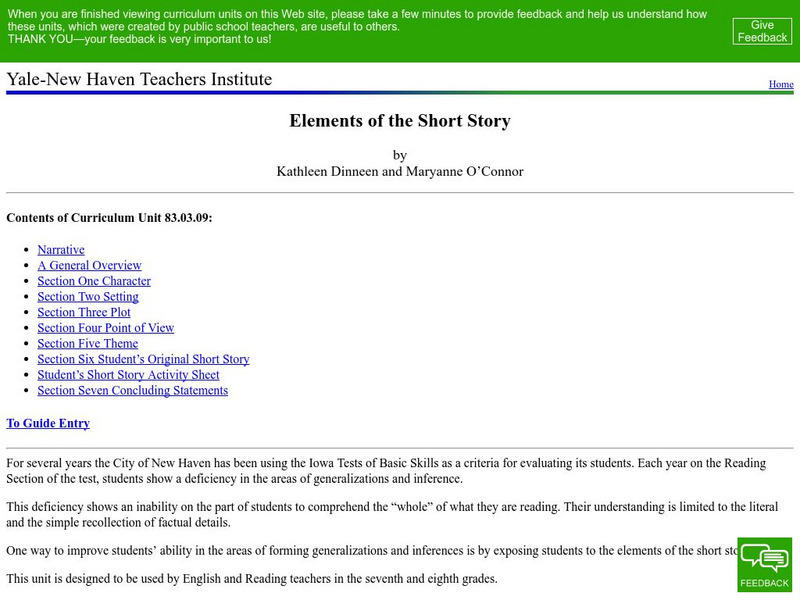Hi, what do you want to do?
Curated OER
Acting Like a Bunch of Animals: Fables and Human
The video "The Tales of Aesop" traces for viewers the history of fables and identifies their characteristics. The class then goes to the web site "The Fisherman and the Little Fish" where they examine the classic and a modern version of...
Curated OER
Graphing With RXTE
Young scholars use data from the Rossi X-ray Tiiming Explorer (RXTE) satellite to analyze and graph.
Curated OER
Reading Multicultural Literature
Students read several fictional pieces which examine issues of urbanization and rural cultures. They discuss how the place a person lives affects the kind of person they become.
Curated OER
Mathematical Relationships
Students practice graphing a linear equation and a parabolic equation. They work cooperatively to select numbers, including fractions, which they will put into ordered pairs. Students explain their process to the class, discussing what...
Texas Education Agency
Texas Gateway:writing an Engaging Story With Literary Strategies to Enhance Plot
A learning module that teaches students about writing a short story with a strong plot in seven mini-lessons: Introduction, Choose the Point of View, Figure Out What to Say, Suspend Readers in Midair, Write about a Central Theme, Read A...
Writing Fix
Writing Fix: Rolling With the Animals
After reading Duck on a Bike by David Shannon, the writer will plan an original story where an animal (other than a duck) finds itself in a human mode of transportation (other than a bike). Three other animals will react to the unusual...
Sophia Learning
Sophia: Characters and Plot
This lesson introduces the connection between characters and plot in fiction writing.
Texas Education Agency
Texas Gateway: Writing Literary Text With an Engaging Story Line
A learning module that teaches students how to write an engaging literary text in six lessons: Introduction, The Narrative Hook, Setting, Conflict, Plot, and Ending.
Texas Education Agency
Texas Gateway: Writing a Short Story With Well Developed Conflict and Resolution
A learning module that teaches students about writing a short story in six mini-lessons: Introduction, Understanding the Essence, Getting an Idea, Structuring Plot, Building Conflict, and Outlining Your Own Story.
Writing Fix
Writing Fix: A Chapter Book Writing Lesson: Creating a Parallel World
Inspired by the opening events in The Subtle Knife by Philip Pullman, young scholars are asked to create an original parallel world that is similar to ours but different in certain ways. They will focus on the similarities and...
Caro Clarke
Historical Fiction: Who Rules?
This is the fifteenth article in a series designed to help the new novel author. This article focuses on the genre of historical fiction and the role of the author. Is the author a researcher or a story-teller?
Caro Clarke
Caro Clarke: Writing Advice: Beginner's Four Faults
This site is a personal site from Caro Clarke. The third installment in this series looks at the four major mistakes made by beginning authors. The main idea of this article is that the author needs to be able to combine dialogue with...
Sophia Learning
Sophia: Characters and Theme
This lesson introduces the connection between characters and theme in fiction writing. RL.9-10.3 Analyzing Characters
Sophia Learning
Sophia: Characters and Setting
This lesson introduces the connection between characters and setting in fiction writing.
Caro Clarke
Not Stopping the Reader: How to Avoid Stumbling Blocks
This is the eighth article in a series that focuses on helping the new novel author. This article looks at how the author can avoid creating stumbling blocks that disrupt the flow of the novel.
Caro Clarke
Describing Your Characters Through Their Actions
This is the tenth in a series of articles designed to help the new novel author. This article focuses on how to develop characters through their actions instead of simply relying on dialogue and description of thoughts. W.11-12.3d...
Caro Clarke
Caro Clarke: What Is Conflict?
This is the sixth in a series of articles designed to help the new writer with their novel. This article focuses on conflict and how it effects the characters and the plot of the story. W.11-12.3a Narratives
Caro Clarke
Explaining Too Much: Why More Is Less
This is the eleventh article in a series that is designed to help the new novel author. This article focuses on how to eliminate needless information in your novel. The key is to not explain too much about the action.
Caro Clarke
The Art of the Unspoken: Saying More by Describing Less
This is the thirteenth article in a series that was developed to help the new novel author. This article focuses on how good descriptions aren't necessarily connected with a lot of words, good descriptions are clean and to the point.
Yale University
Yale University: Elements of the Short Story
This unit from the Yale University on elements of the short story is designed to develop student comprehension skills, particularly making inferences and generalizing. It also involves students in reading a number of short stories to...












